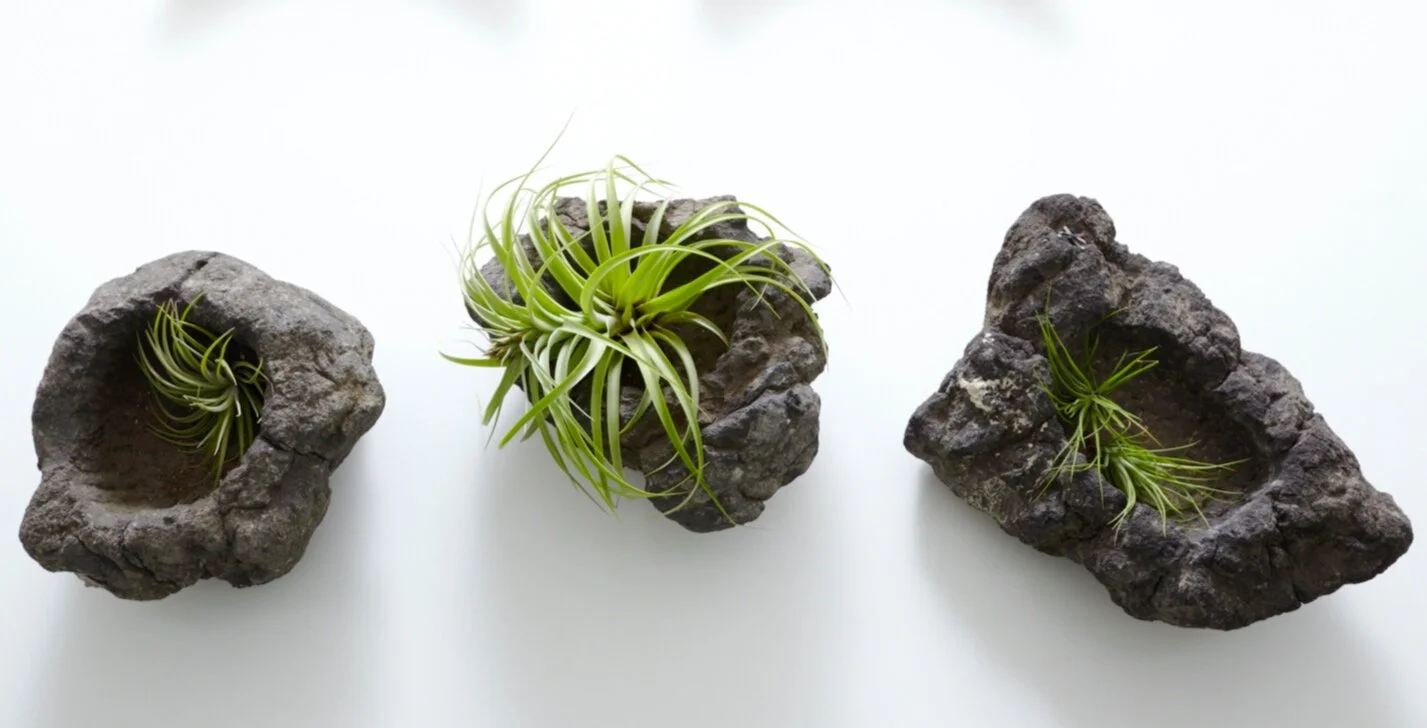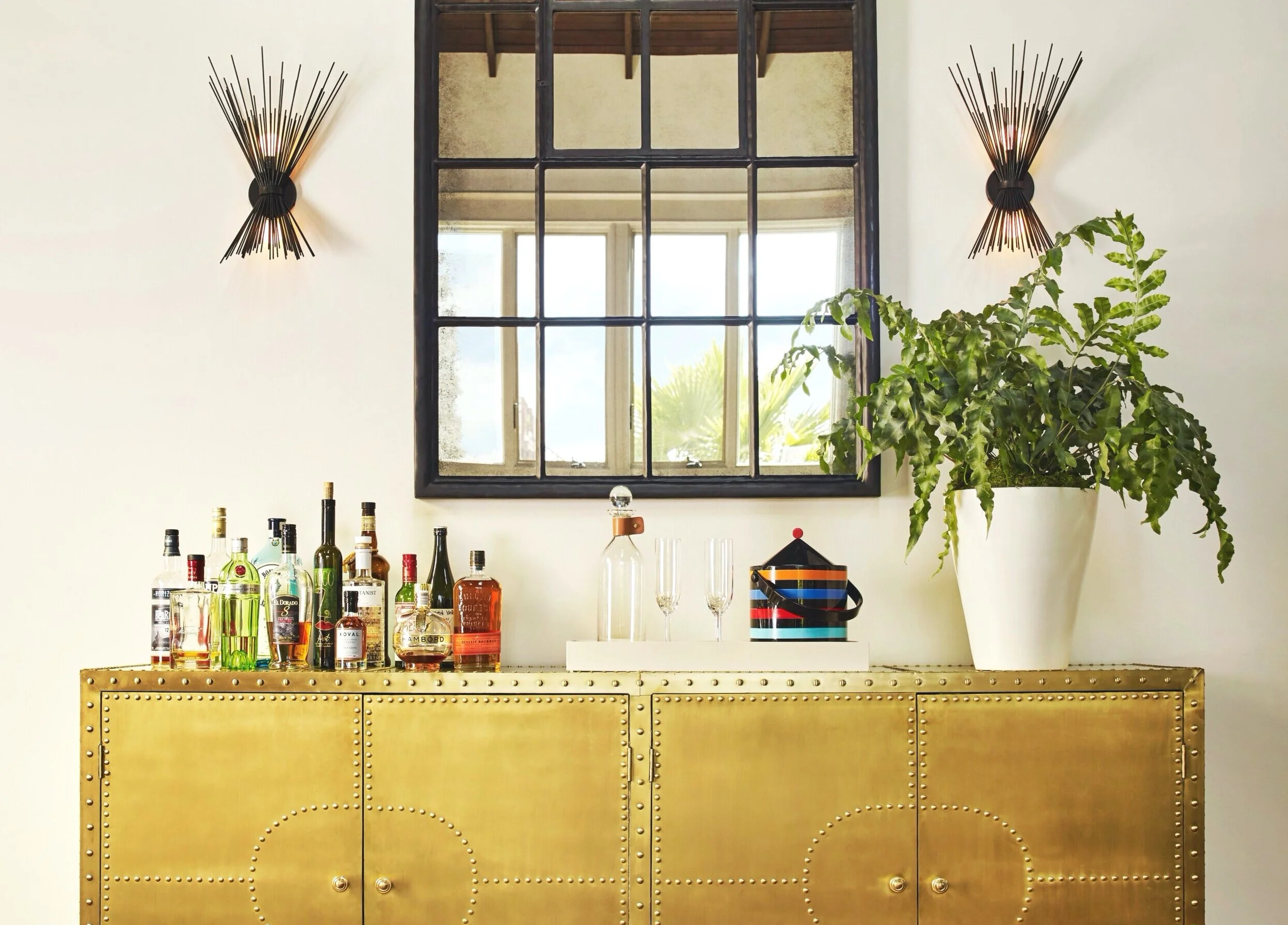Creating Comfort with Indoor Plants
Kristin Riccio Interior Design, Clinton Perry Photography
With social distancing and increased downtime in our homes, many of us are finding new space for at-home projects and improvements. Perhaps you’ve always had an interest in indoor gardening but never had time to invest, or if you’re suddenly feeling inspired to go green - now's a great opportunity to get planting.
Aside from having an incredible design impact, inviting a bit of the outdoors into your space can bring comfort and a surprising number of health benefits we can all appreciate (especially now!). We’ve teamed up with garden designer, Brandon Pruett of Brandon Pruett Design to talk more on the joys of planting and how to successfully take on an in-home garden project.
Brandon Pruett Design
Health Benefits of Indoor Plants
1.Better Mood
Plants are natural mood boosters and can provide significant mental and emotional benefits. Studies have shown that caring for a plant can help with depression and loneliness and living with houseplants can lessen stress and anxiety. In addition, they can also help people to be more productive by increasing concentration and creativity. Studies have shown that keeping greenery on your desk and around your office can increase productivity, critical thinking, and creativity as much as 47%.
2.Cleaner Air
Indoor plants can help to purify air and remove chemical pollutants that can cause headaches, fatigue, and asthma. Houseplants are also known to increase and balance humidity indoors which can alleviate dry skin, sinus infections, and help to support the respiratory system.
3.Better Health
Plants can contribute to an overall increase of well being which can boost your immune system. As we mentioned earlier, indoor plants have been known to reduce stress and anxiety which can lower blood pressure and help to give you a better night's sleep. They also assist in building tolerance and immunity to everyday allergens. It’s said that hospital patients with garden or outdoor views often have quicker recovery and shorter hospital stays.
4.Increased Comfort
Indoor plants bring a sense of peace into the home as they can help to create a more calm and relaxing environment. In addition to balancing air quality and humidity, plants improve sound quality by absorbing or reflecting loud noises which can benefit larger spaces or rooms with thin walls.
Kristin Riccio Interior Design in collaboration with Living Green Design, Clinton Perry Photography
Plants and Home Aesthetics
Indoor plants aren’t just good for us - they’re extremely versatile decor elements. Greenery can enhance any space by adding texture, color, and visual intrigue. While there’s a myriad of beautiful options out there, start by selecting intriguing varietals to mix different shapes, sizes, and colors. It’s important to also spend a little time considering a cohesive pot that works with your plant and the room as a whole; there’s an endless amount of unique planters and hangers today to shop from. Add accent plants to your cabinets, shelves, and corners or consider showing off a mature prized plant as a room’s focal point. Having entire shelves or garden rooms dedicated to plants is also becoming more common with plant enthusiasts.
Kristin Riccio Interior Design, Clinton Perry Photography
Q and A with Brandon Pruett
Brandon Pruett Design
Q: How do you feel gardening can improve a client’s experience in their home?
“What’s interesting about now in terms of the cycle of the year is that it’s spring, so our days are getting longer . Investing in plants now means you’ll be able see and experience the new growth, whereas some plants in winter months go dormant.
Right now, especially during shelter in place, people are looking for things to hold their attention and relate to. Having another living thing in the house to watch grow, care for, and give you companionship is really important. Psychologically, plants bring a sense of joy and stability to someone’s life when they have a routine to water, trim, etc. Think of the victory gardens that came up during WW2- they popped up in people’s front yards to provide food and give people joy. “
Q: What plants do you suggest for beginners?
“For an interior plant, Split-leaf philodendrons are easy to take care of and they have large leaf growth so you get a lot of bang for your buck. Also, the Ficus Audrey tree, which are just now becoming widely available on the market have great leaf structure and are tidy plants to maintain in the home.
If you’re looking for a small quarantine commitment, I’d suggest a small scale herb garden - its a one season kind of thing. Basil, for instance generally lasts 2-3 months. Most people have success with herbs and they can bring you tangible benefits- something to take care of and love on but can also enrich your food and meals. Basil, cilantro, peppers, etc. all grow in relatively small containers.”
Q: How do you go about selecting a plant species and pot appropriate for the space?
“You want to have enough light. Generally, my rule is you’ll want a plant to be within 6’ of a window. Its good for the foliage to be able to look out a window and see blue sky - that means you’re getting good reflective light and you’ll know it will do better there.
You also need to have a good size pot - buy a pot which is much larger than the one you’ve purchased it in so it has space to grow and mature. For interior plants, to ease the task of maintenance and to prevent water damage on floors, you should consider staging your planter- upsize the plastic grow container for your plant and place the utilitarian container into a more decorative pot. You then can then just lift your lighter weight container out of the decorative pot, bring it outdoors or into your bathroom shower to water and trim. Return to the ceramic pot and place sheet moss to conceal the fact that its actually in a grow pot. The style of your decorative pot should work with the design of your room as a whole. You dont need to buy it with a drainage hole, which means any water drainage will stay in the pot (keeping your floors from water damage) and continue to water the plant throughout the week.”
Q: When it comes to mixing species for varied texture, color, and height- what are your go-tos and how do you do this successfully?
“Light requirements for neighboring plants should be about the same. One of my favorite plants is a Blue star fern. Its a plant that grows well next to most other plants and produces beautiful arching blue grey leaves. It partners really feel with certain types of Bromeliads and plants that have hardier and waxier types of leaves. To place on shelves on ledges, I like to use Rhipsalis. It’s a succulent shaped like spaghetti and looks great cascading off a shelf. You get that natural texture falling down and there’s something about it that makes it looks like it’s been there for a long time, it feels established.”
Q: What are some general tips for success? Creating a watering/maintenance plan, etc.
“Watering needs really depend on the species, the season, and sun exposure. I generally tell people to start out a schedule of watering once a week, use that as a baseline and from there monitor the soil moisture. Also, you should create an airspace under the pot with either a decorative stand or by using small plastic feet, they’re easy to buy and designed to be invisible.”
Brandon Pruett Design






